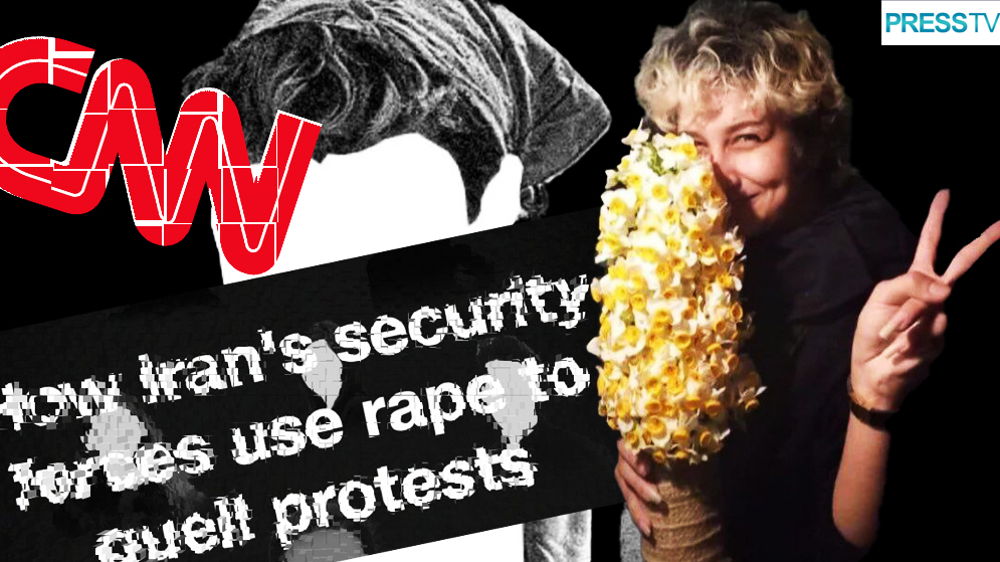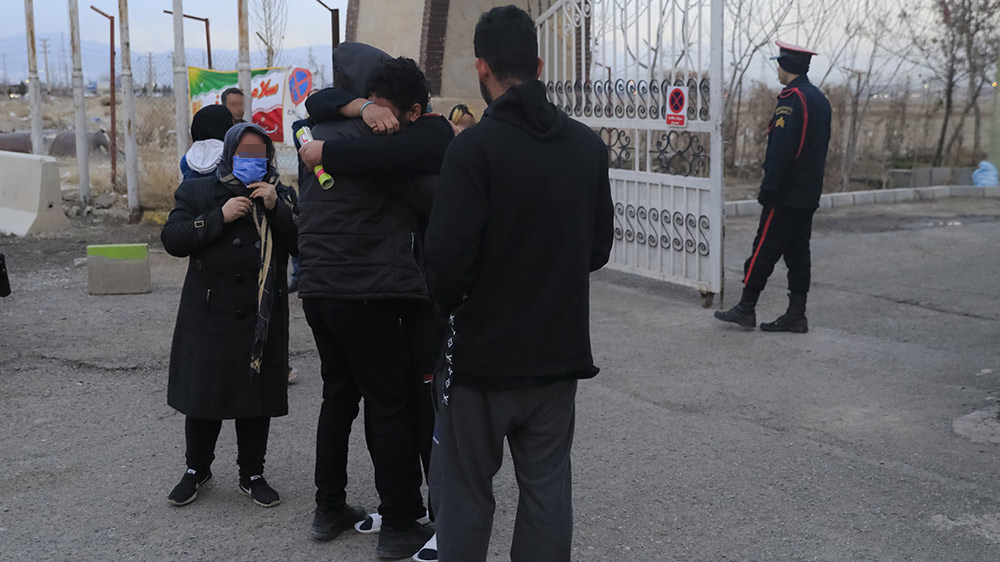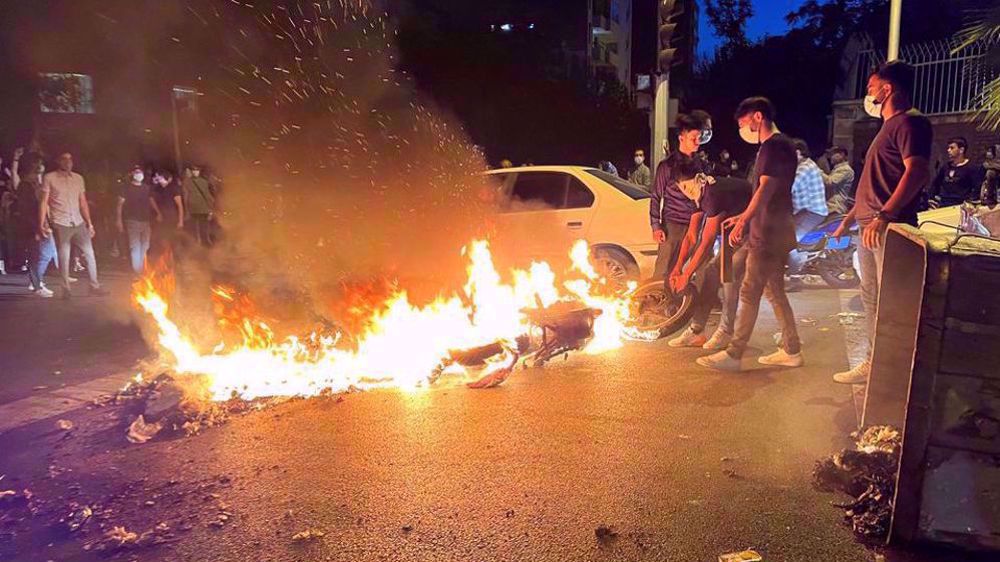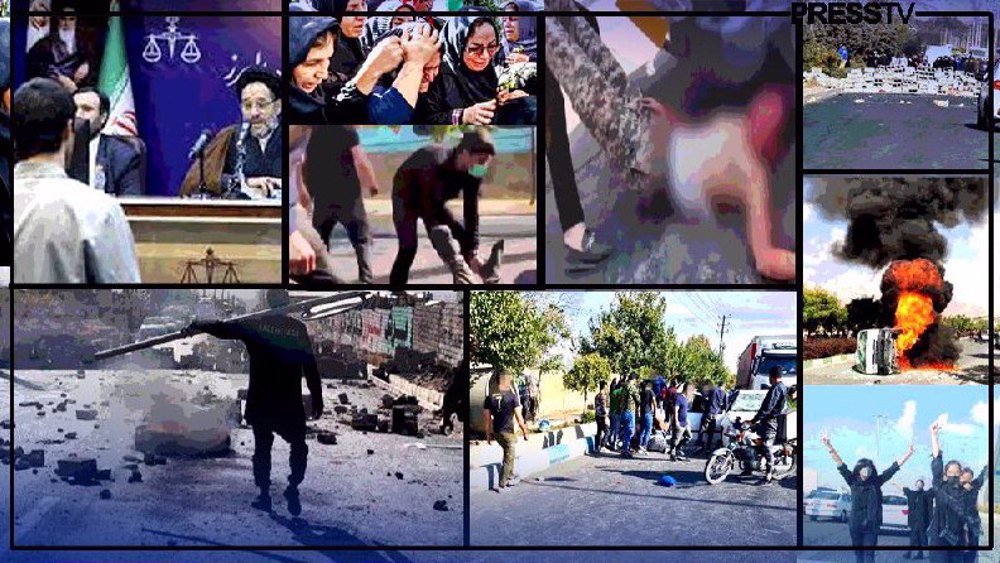The curious case of Armita Abbasi and CNN’s anti-Iran propaganda
By Syed Zafar Mehdi
On November 21, 2022, CNN published a detailed report on Iran’s security forces “using rape to quell protests”. The lead protagonist of the whimsical story was 20-year-old Armita Abbasi.
Introducing her as a “Gen Z-er” with a “platinum blonde hairdo” and “eyebrow piercing”, the carefully woven and inherently-deceptive interactive story said the “uprising” had “changed her life”.
Abbasi was arrested in mid-October during the foreign-backed riots in Iran, triggered by the death of 22-year-old Mahsa Amini, for her role in instigating violence against security forces.
A report in judiciary-affiliated Mizan News on October 29, 2022, days after Abbasi’s arrest, cited the prosecutor in central Alborz province as saying that she issued calls for riots through social media.
During the search of Abbasi’s home, bottles of gasoline, Molotov cocktails and lighters were discovered, the report stated, after which she was arrested and sent to a detention center.
Responding to social media rumors about her “custodial torture and rape”, the prosecutor said Abbasi had “digestive problems” related to her past history of hemorrhoids due to which she had to be briefly admitted to a hospital and was discharged within 24 hours.
Soon, many foreign media outlets jumped on the bandwagon, particularly after Abbasi’s mother took to Instagram on October 31, posting pictures of her “missing daughter”.
Her mother alleged that Abbasi was last seen in Imam Ali Hospital in Karaj when she was “kidnapped by the IRGC agents and taken to an unknown location in a semi-conscious state”.
The mother's post provided fodder for anti-Iran propaganda machinery in the West to push their diabolical agenda, alleging that the 20-year-old woman was “raped” and “tortured” in custody.
Masih Alinejad, the notorious CIA-bankrolled hothead, immediately took to Twitter, saying doctors treating Abbasi reported “internal bleeding” and speculated she was “raped and tortured”.
In the days following, social media was abuzz with unverified posts carrying fabricated details about Abbasi’s alleged arrest, torture, rape, and even execution, straight out of a horror movie.
The CNN report on November 21, based on unnamed ghostly “sources” and social media “leaks”, took the distasteful propaganda to the next level.
Citing unconfirmed “leaks” from the hospital where Abbasi was treated, the report claimed that “her head had been shaved” and the medical staff was horrified to see “evidence of brutal rape”.
It further said she was “hemorrhaging from her rectum… due to repeated rape” and the plainclothes men “insisted that the doctor write it as rape prior to arrest”.
The report went on to quote an anonymous “insider” at the Imam Ali Hospital in Karaj, confirming the “veracity” of the information leaked by “four to five medics” on social media.
“She was my patient. I went to her bedside. They had shaved her hair and her head was wrapped. She was scared and was trembling,” one of the medics was quoted as saying.
CNN said it presented the leaked accounts of Abbasi’s “injuries” to an Iranian doctor outside Iran who said the symptoms “indicated brutal sexual assault”.
Many media outlets in the West cited the CNN report to push the narrative that women’s rights are not respected in the Islamic Republic and that rape is used as a weapon to oppress women.
Even US Department of State Ned Price fell for the fabricated narrative woven by CNN and other Western media outlets, attacking what he called “sexual violence” by Iranian authorities.
Iran’s Persian-language Jam e Jam newspaper in its report on November 26 questioned the CNN “investigation” for its glaring inconsistencies and lack of clinching evidence to back the claims.
Divulging more details about the case, the report cited Abbasi’s hospital diary as stating that she “complained of weakness, lethargy and fatigue during the medical examination” and had “runny nose, dry mouth, palpitation, pain in the lower abdomen and back a few days prior to the hospital visit”.
During her check-up by a gynecologist at the hospital, “no abnormalities were found” and the nursing report clearly stated that the patient “didn’t want to stay in the hospital and was discharged with her consent and in good general (health) condition”.
Despite Iranian media convincingly rejecting the claims in the CNN report, and presenting irrefutable facts about the case, the propaganda mills in the West remained ablaze.
UK-based and Saudi-funded propaganda outlet, Iran International, in a report on December 27 said Abbasi was “raped brutally after being arrested” and taken to a hospital with “multiple injuries including internal bleeding, a shaved head, and evidence of repeated rape”.
A day before, the unofficial mouthpiece of West-based Iranian “opposition”, Iran Wire, cited the notorious actress-turned-collaborator Nazanin Boniadi as saying that she was “deeply concerned” by reports that Abbasi, “beaten and violently raped by security forces to the point of hospitalization and abducted again from the hospital" was "at risk of being executed”.
In a report on January 2, Voice of America's Persian service quoted her mother as saying that Abbasi had gone on a “dry hunger strike” inside the jail “to protest her long detention”.
Al-Arabiya Persian service in a report three days later said 14 other prisoners had also joined Abbasi in her hunger strike at Pardis prison. It also shared an Instagram post by German lawmaker Kerstin Vieregge “expressing concern” about the condition of hunger-striking inmates.
On Tuesday, however, all lies were laid bare when Abbasi walked out of prison after less than four months, looking physically healthy, smiling heartily, and flaunting her curly dyed hair.
The bogus claims of rape, torture, weight loss, and shaved head all turned out to be pure deception.
Abbasi’s release came days after the Leader of the Islamic Revolution Ayatollah Seyyed Ali Khamenei approved a mass amnesty for many of those who were arrested during recent riots.
Her hale and hearty appearance prompted netizens to question the so-called “investigation” by CNN and concocted reports by other run-of-the-mill media outlets, including those in the Persian language.
Some social media users couldn’t resist the urge of drawing parallels between the case of Abbasi and those of Nika Shakarami, Hassan Firouzi and many others, all built around monumental lies.
“This is Armita Abbasi, after being released from beauty salon, oh wait sorry, the prison,” wrote one user on Twitter, sharing Abbasi’s gleeful image with daffodil flowers and a smiling face.
Syed Zafar Mehdi is a Tehran-based journalist, political commentator and author. He has reported for more than 13 years from India, Afghanistan, Pakistan, Kashmir and West Asia for leading publications worldwide.
Iran condemns G7 hypocrisy on human rights following interventionist statement
VIDEO | Death behind bars: Gaza’s prisoners. silence surrounding them
60,000 weapons bound for Tehran seized as Mossad-trained terror cell busted
VIDEO | 13th day of war
Israeli strikes kill two in Lebanon as UNIFIL warns against ceasefire violations
Trump threatens to slap tariffs on countries opposed to US Greenland takeover
VIDEO | Press TV's news headlines
VIDEO | Iran: A make-or-break moment?















 This makes it easy to access the Press TV website
This makes it easy to access the Press TV website